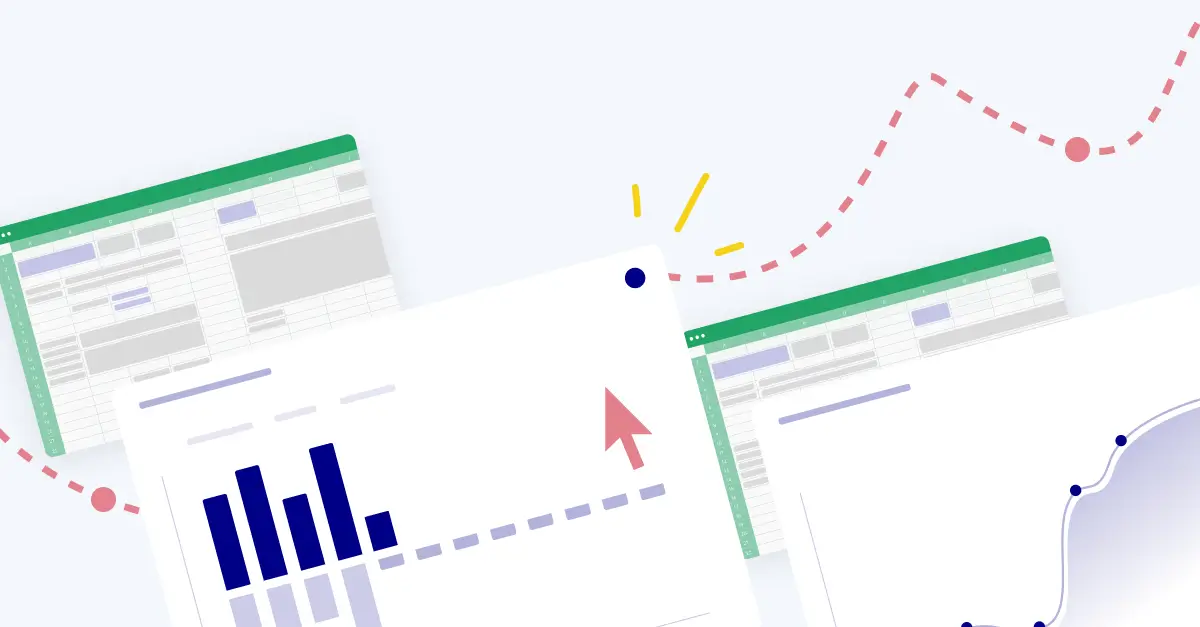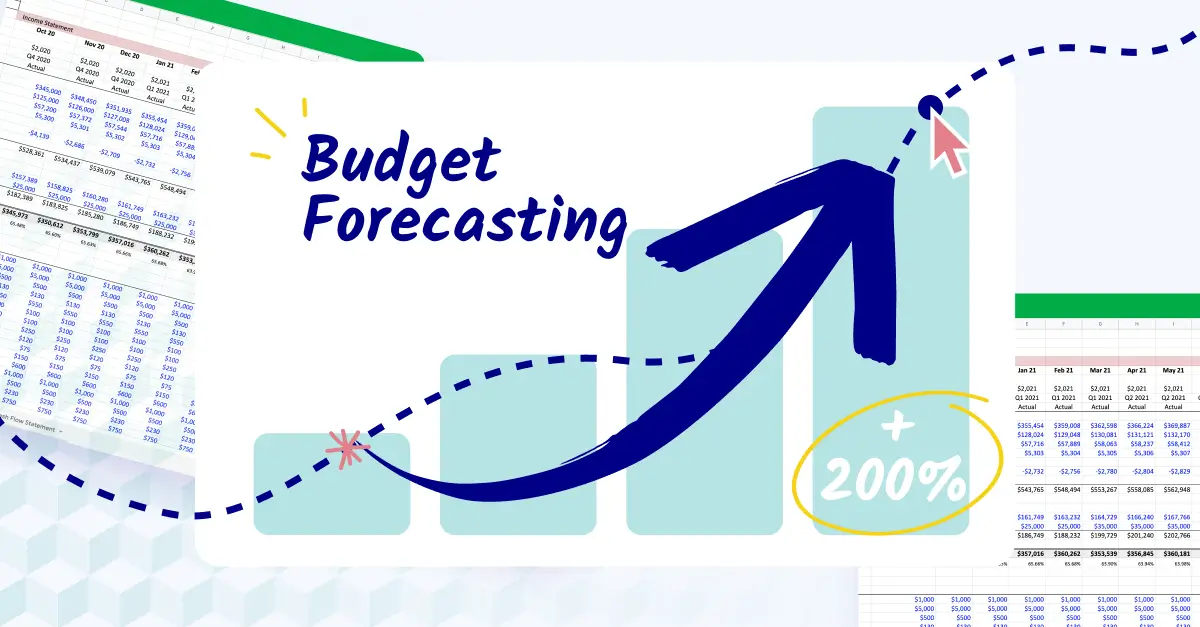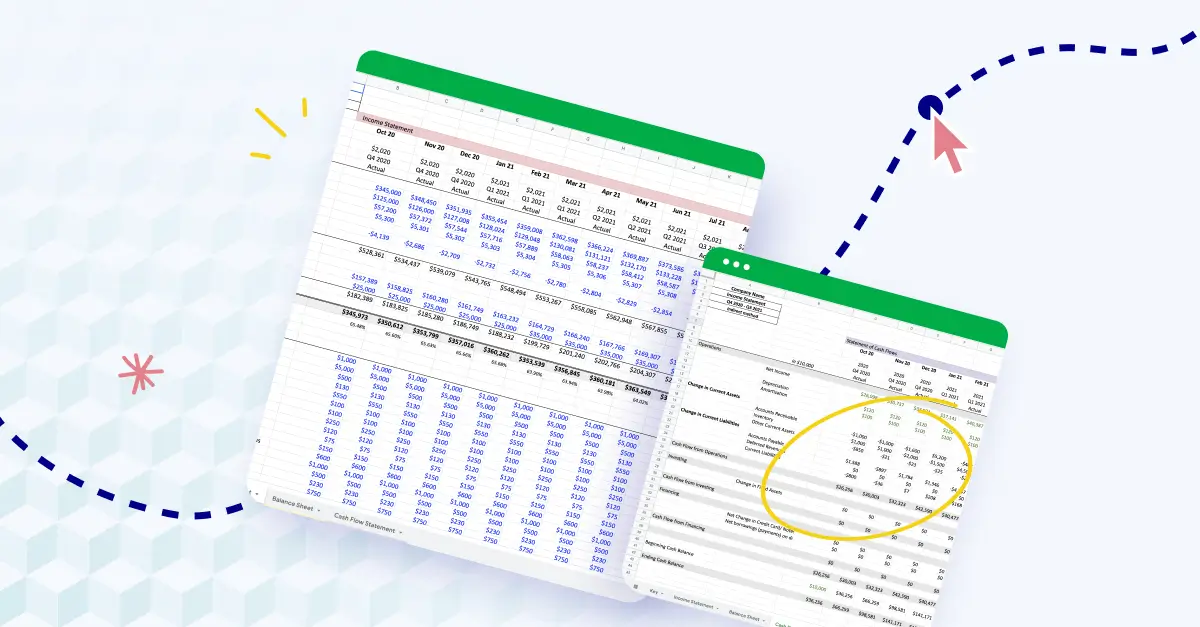Key takeaways on budgets vs forecasts vs plans
- Budgets, forecasts, and plans play separate but complementary roles in strategic financial management.
- Budgets provide a baseline for financial performance, while forecasts allow businesses to adapt to changing conditions, and plans ensure alignment with long-term goals.
- Using all three in tandem leads to better decisions, resource allocation, and smarter reactions to market changes.
What’s the difference between budget vs forecast vs plan?
A plan serves as the foundation, a budget guides how to allocate cash, and a forecast projects the financial future of the business. CFOs understand that each is a standalone piece of the company’s financial puzzle.
While budgets, forecasts, and plans have a lot of commonalities, here are some differences:
- A budget outlines a company's financial plan for a specific period, typically focusing on expected revenues and expenses, and is generally fixed for the year.
- A forecast provides an updated projection based on current performance, allowing businesses to adjust their operations in real time.
- A plan is a strategic, long-term vision that defines the company’s financial and operational goals over several years, offering a broader roadmap for growth.

What is budgeting and how do companies use it?
Businesses, but most commonly the finance team, compile a budget to determine how the company will spend its capital during the next period—a month or quarter, but typically a fiscal year.
The budget’s primary goal is determining what resources to allocate to each part of the company, from salaries to office supplies. The focus of a budget revolves around cash position, including expected revenues and expenses, to create specific financial goals for the foreseeable future.
Most businesses create a budget annually and implement it from the start of the fiscal year. The budget is also commonly considered “unmovable” and is used to gauge the performance of actuals or forecast data versus the planned budget.
The benefits of a great budget
Budgets are essential for any business to operate within its means but there are some extra benefits too.
- A thorough budget offers clear guidance on how a company should be spending its resources by providing a line item for any expense imaginable.
- Regular budget reviews align expectations with reality, ensuring revenue and expenses are consistently tracked against set goals.
- Comparing the budget with actuals gives you accountability for departmental spending by making overages and funding gaps visible as the year progresses.
Challenges in the budgeting process
Alongside their obvious necessity, budgets routinely throw up difficulties.
- Budgets are intrinsically restrictive, so CFOs need to communicate strategically with departments that feel like they’re missing out.
- Since budgets are set for the year, they can limit flexibility, especially when unexpected cash flow issues arise that require spending adjustments.
- Financial analysts must continuously assess variances between projected and actual figures to evaluate the budget's effectiveness and overall fiscal health.
The role of forecasting in financial planning and analysis (FP&A) departments
A forecast is a financial snapshot of the future as it is best understood today. When creating a forecast, teams must examine possible financial outcomes based on the most up-to-date drivers and assumptions. The result is a view of how the business is trending so that the leaders can determine whether or not adjustments should be made to the existing budgets or plans.
For example, the budget might assume that the business will hit a $10M revenue target, but the forecast shows that it’s on target to only achieve $8M. Given the difference between the forecast and the budget, the business might adjust the variable costs associated with lower revenue, while simultaneously adjusting the expense plan to hit cash targets.
How forecasting contributes to business growth
It’s no coincidence that all companies use forecasting, and here’s why.
- A company’s financial forecast uses predictions to structure operations and show you how best to deploy resources.
- Forecasting is set in relation to performance benchmarks and shows you if you’re not on track with your targets.
- The forecast’s undefined nature allows it to be used for both short and long-term projections and adapt to recent performance data.
Limitations within the forecasting process
Unfortunately, forecasting isn’t a silver bullet that instantly solves all your future financial issues.
- Forecasting can be a time-consuming process that not all businesses are able to stay on top of regularly.
- Many companies only update their forecasts periodically, such as quarterly or biannually, which can result in outdated information.
- Even with the best forecasting models, it’s still an inexact science that can’t predict anything with 100% success. Of course, an educated estimate is far better than no forecasting at all, so get to grips with your financial forecasting essentials.

A closer look at financial planning in an organization
Generally, a financial plan aims to define the financial direction and vision of the organization within the context of a broader business plan.
Leaders ask themselves how the business will stack up in the next one, five, or even 10 years. The plan answers that question by outlining the company’s operational and financial objectives. Executives build out teams and infrastructure based on this plan and the defined goals.
Colloquially, the “plan” is sometimes used interchangeably with the most recent budget or forecast, and can be broadly considered the budget or forecast that is the most likely “version of truth.”
How to use financial planning to your advantage
On the whole, a good financial plan benefits teams by offering targets for teams to work towards. The means are less important than the end so you can be flexible about how you accomplish the plan.
Here are some day-to-day benefits of financial planning.
- A financial plan gives focus and purpose to daily operations. If you have to choose between two approaches, go for the one that gets you closer to your end goals.
- Leaders can use the end goals to plan for various scenarios, stay agile, and adjust strategies in response to market changes.
- You can streamline the allocation of capital, personnel, and time so every dollar is directed towards achieving the company’s goals.
- Financial planning informs clear benchmarks to track performance over time.
- It drives investment strategies, whether it's in new product development, market expansion, or cost-cutting initiatives, to areas that promise the greatest return.
Challenges finance teams can face during financial planning
Clearly, planning for an unknowable future isn’t an exact science, so it naturally comes with some challenges.
- Financial planning relies heavily on assumptions about future market conditions, customer behavior, and economic factors which can be difficult to predict accurately.
- Developing a comprehensive financial plan can be a time-consuming effort, although financial planning software has significantly reduced the strain of extensive data collection, analysis, and collaboration between departments.
- Financial planning is only as good as the data it’s based on, so you need to be sure of your data integrity.
- Priorities can change rapidly, which can make long-term financial plans obsolete and force you to realign the plan with new strategic goals and market conditions.

Knowing when to use budgets vs. forecasts vs. plans
Budgets, forecasts, and plans are often used in conjunction, but they’re differentiated by their objectives, use cases, and timing.
Objectives
- A budget’s main objective is to set financial boundaries over a given period to control expenses and meet revenue goals.
- A forecast provides an updated view of financial expectations based on your current situation, informing real-time operational adjustments.
- A plan defines long-term strategic goals over several years and outlines the broader vision for achieving those goals.
Use cases
- Budgets are most useful for creating detailed guidelines for departments to avoid scope creep and overspending.
- Forecasts are ideal for assessing how closely the business is tracking against the budget and making necessary adjustments to operations as new data becomes available.
- Plans are used to guide long-term decision-making so leadership can determine what teams, infrastructure, and strategies they’ll need for sustainable growth.
Timing
- Budgets are typically created annually and are rarely changed unless significant circumstances arise.
- Forecasts, on the other hand, are updated more frequently, such as monthly or quarterly, to business performance and market conditions.
- Plans are usually developed with a multi-year outlook but can be revisited and adjusted as needed, especially when there are external market shifts or changes in long-term strategy.
An example of budget vs forecast vs plan in context
A software company might create a five-year strategic plan that outlines goals to enter new markets and develop a range of innovative products to increase revenue streams.
The budget at the beginning of year one might allocate specific funds to marketing and product development, as well as standard operations. They quickly find traction in new geographies, so update forecasts, saying that they’re likely to meet expansion targets a quarter early will be updated quarterly to reflect actual performance, such as whether revenue targets are being met or if more resources are needed in certain areas.
Understanding a plan vs. a budget vs. a forecast
All three terms reflect expectations and estimates of financial objectives. Financial planning lays the foundation for budgeting, suggesting that a financial plan must precede the budget so that company leaders have an idea of what they’re budgeting for. Meanwhile, a forecast projects how far over or under expectations a company may be.
A financial plan is a strategic, long-term tool, while a budget is tactical and short-term. A financial forecast is an updated reflection of the future. In a way, the forecast bridges the gap between the business plan and the budget.
The most financially disciplined businesses leverage all three tools in planning and operations. Financial modeling software like Cube can help companies build multiple plan scenario types, including budgets, forecasts, and even what-ifs, in a way that allows leaders to visualize data, analyze past performance, and calculate how decisions may affect future goals.
Want to see how Cube can accelerate your financial planning? Get a demo today.



.png)




![Budget vs. forecast vs. plan: What’s the difference? [2025]](https://www.cubesoftware.com/hubfs/whats-the-difference-between-a-plan-a-budget-and-a-forecast.png)






